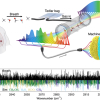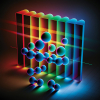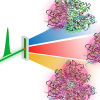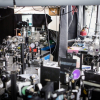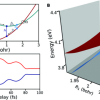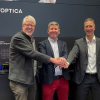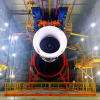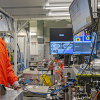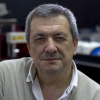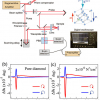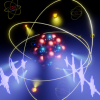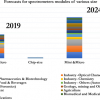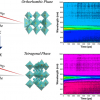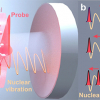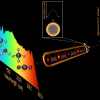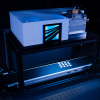Laser Spectroscopy News
Scientists from Moscow, Russia studied the dynamics of lithium plasma under laser-induced breakdown spectroscopy using a custom system made using 3DLINE code.
A breathalyser for detecting COVID and other diseases has been developed by scientists at JILA.
New design has exhibited practical potential for the construction of ultra-compact multispectral and polarised imaging devices without the need of a multi-pass design using complicated spectral filters or mechanically moving parts.
New optical comb spectroscopy technique using a quantum state with reduced noise called “squeezed light” could achieve more than a ten-fold improvement in detection limits.
Scientists at the Universities of Würzburg and Ottawa have solved the decades-old problem of distinguishing between single and multiple light excitations.
Exploiting dark autoionising states for enhancing extreme ultraviolet laser power relevant for advanced ultrafast science applications such as angle-resolved photoemission spectroscopy and photoemission electron microscopy.
Scientists at Stockholm University have proposed a non-linear spectroscopic technique to investigate the coupled nuclear electronic dynamics in a photo-excited molecule.
TOPTICA Photonics AG has entered into a definitive purchase agreement to acquire the majority of the shares of French fibre laser technology company Azurlight Systems SAS.
NTU Singapore has launched the S$160 million Institute for Digital Molecular Analytics and Science, which aims to advance the science behind analysing biomolecules through the use of information technology and data science.
Large-scale, chemical-specific emissions information poised to aid development of greener airplane engines and fuels.
Scientists have used ultrashort laser pulses to make the atoms of molecules vibrate and have gained a precise understanding of the dynamics of energy transfer that take place in the process.
Fusion of LIBS and acoustic data to analyse minerals under Terrestrial and Martian atmospheric conditions improves the performance.
Researchers at the University of Tsukuba are using ultrafast spectroscopy to measure tiny changes in magnetic fields using nitrogen-vacancy defects in diamonds, paving the way for more accurate quantum sensors for spintronic computers.
An international team of researchers has demonstrated attosecond-pump attosecond-probe spectroscopy to study non-linear multi-photon ionisation of atoms.
A review of and prediction for the development of chip-based optical spectrometers.
New work overviews the crucial charge carrier transfer processes and dynamics within perovskite active layers by means of time-resolved ultrafast laser spectroscopy.
The Gordon F. Kirkbright and Edward Steers awards are seeking nominations.
Optical solitons often combine into pairs with very short temporal separation. Introducing atomic vibrations in the terahertz range, researchers at the Universities of Bayreuth and Wrocław have solved the puzzle of how these temporal links are formed.
A type of optical fibre with a refractive index that varies continuously across the fibre structure has been shown to yield a dramatic increase in supercontinuum power, while still preserving a smooth beam intensity profile.
Fraunhofer IAF has developed an integrable measurement system which uses machine vision to detect samples and verify them using laser-based infrared spectroscopy.


